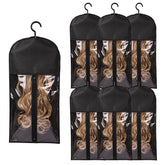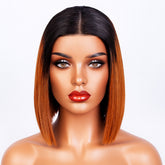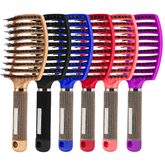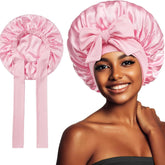Dakota Johnson's Hair Secrets: Serum Tips and DIY Bangs

Dakota Johnson has become as well known for her effortless, lived-in hair as she is for her screen roles. In a recent Vogue profile she spoke about the products she reaches for — including a favourite hair‑growth serum — and how she sometimes trims her own bangs. For readers keen to replicate that seemingly low‑effort polish, there are practical lessons here about choosing serums, protecting hair during growth, and safe at‑home trimming. This guide looks at what to consider when introducing a growth serum and how to approach cutting bangs with minimal risk.
Why hair‑growth serums work — and what to look for
Hair‑growth serums are a broad category. Some are cosmetic treatments that improve the appearance and condition of the hair and scalp; others contain active ingredients with clinical evidence for stimulating growth or slowing shedding. When evaluating a serum, look at the formulation and its intended claim.
- Clinically supported actives: Minoxidil is the most widely studied topical treatment for hair regrowth in androgenetic hair loss, but it is a medical intervention and may not be appropriate for everyone.
- Supportive ingredients: Peptides, niacinamide, panthenol and caffeine are common in serums and can support scalp health and the look of thicker hair.
- Botanical additions: Rosemary oil, castor oil and other botanicals can improve scalp condition; evidence for growth is mixed but many users find them nourishing.
- Scalp delivery: A lightweight formula that absorbs quickly is easier to use consistently; leave‑in serums often encourage regular application, which is key to seeing results.
Consistency matters. Whether you choose a cosmeceutical serum or a botanical option, regular application and a healthy scalp environment — clean, exfoliated and free from heavy buildup — will make treatments more effective.
How to introduce a serum into your routine
If you’re new to serums, a simple, stepwise approach helps you identify benefits and avoid irritation.
- Patch test first: Apply a small amount of product to the inner forearm for 24 hours to check for sensitivity.
- Start slowly: Use the serum every other day for two weeks, then increase frequency if your scalp tolerates it well.
- Pair with a gentle scalp cleansing routine: Use a clarifying wash once a week if you apply leave‑in treatments daily, to prevent residue.
- Track progress: Take images every 6–8 weeks; changes in density are gradual and best judged over months.
Cutting your own bangs — the safe, simple method
Johnson’s candid admission that she sometimes trims her own bangs will be familiar to many who value convenience. If you opt to do the same, preparation and restraint are essential. Hair professionals caution that cutting bangs is easy to overdo; a conservative approach produces the most wearable results.
- Tools: Use sharp hairdressing scissors (not household scissors), a fine-tooth comb and clips to section hair.
- Work dry or slightly damp: Dry hair shows its natural fall; cutting bangs dry reduces the risk of shortening too much due to shrinkage when hair dries.
- Start long: Pull the hair down to your desired area and make tiny vertical snips rather than a long horizontal cut — this creates a softer, feathered edge.
- Trim a little, then pause: It’s easier to cut more than to add length back. Reassess in natural light and with styling before repeating.
For significant restyles or if you have curly or highly textured hair, visiting a stylist remains the safest option. They can tailor a fringe to face shape, curl pattern and lifestyle — factors that DIY trimming can’t always account for.
Maintenance: styling, protection and trimming cadence
Growing and maintaining a healthy fringe or longer lengths involves simple but consistent care:
- Protect from heat: Use a heat protectant before styling to avoid breakage around delicate fringe hair.
- Soft holds: Lightweight styling creams and texturising sprays create movement without stiffness.
- Regular trims: A light trim every 6–8 weeks keeps a fringe tidy and prevents splitting at the ends.
- Scalp care: A balanced shampoo routine and occasional gentle exfoliation support the environment where hair grows.
Takeaway
Dakota Johnson’s approach — a trusted serum in rotation and the confidence to do small trims herself — underlines two simple rules for approachable, elegant hair: choose treatments that suit your scalp and lifestyle, and be conservative when cutting. Whether you adopt a growth serum, try a gentle DIY trim, or book time with a stylist, the priority is consistent care and realistic expectations. Small, regular steps will deliver a healthier scalp and more manageable hair over time.
Learn More: Explore detailed haircare routines and styling tips at Hairporium Guides.







